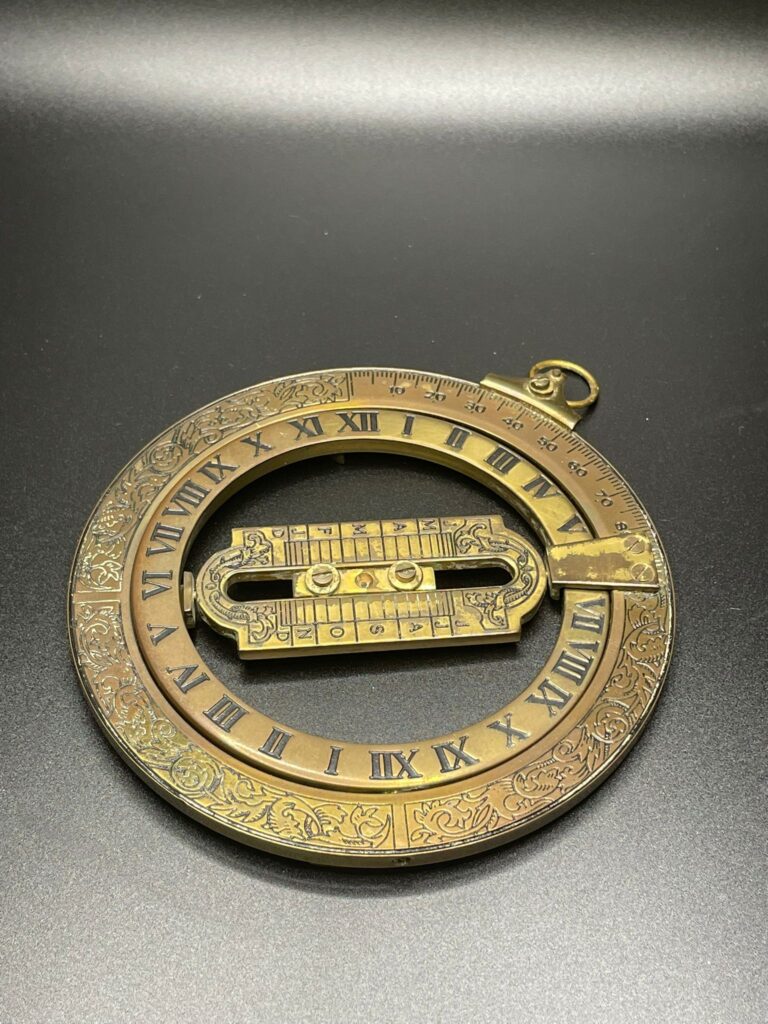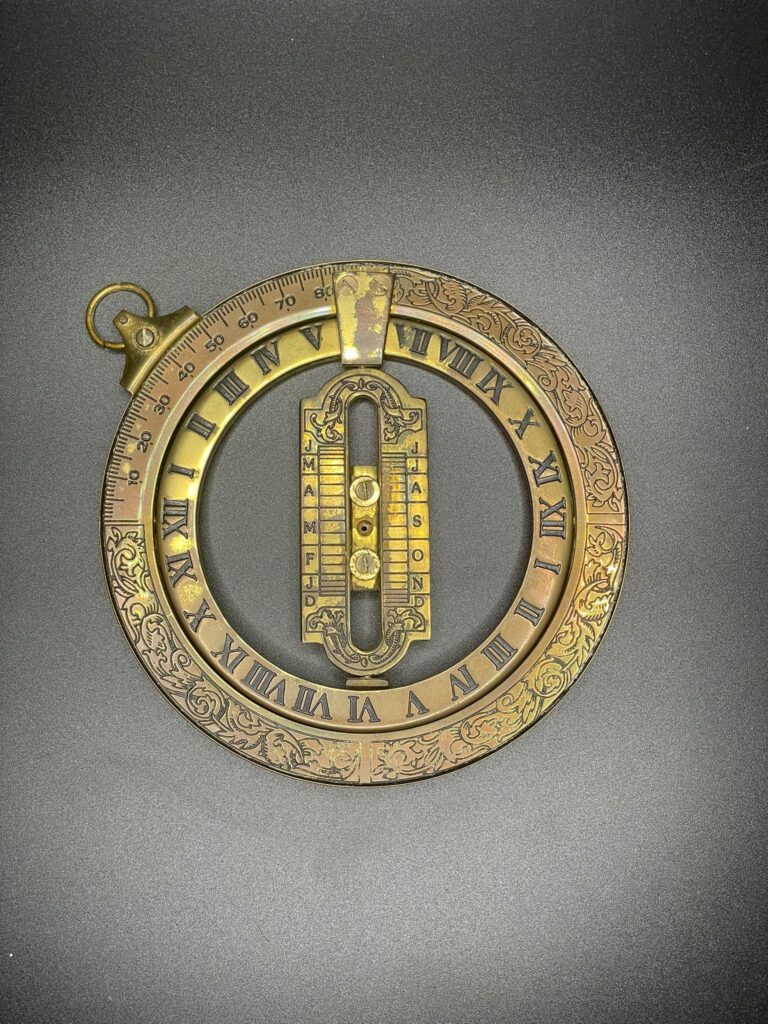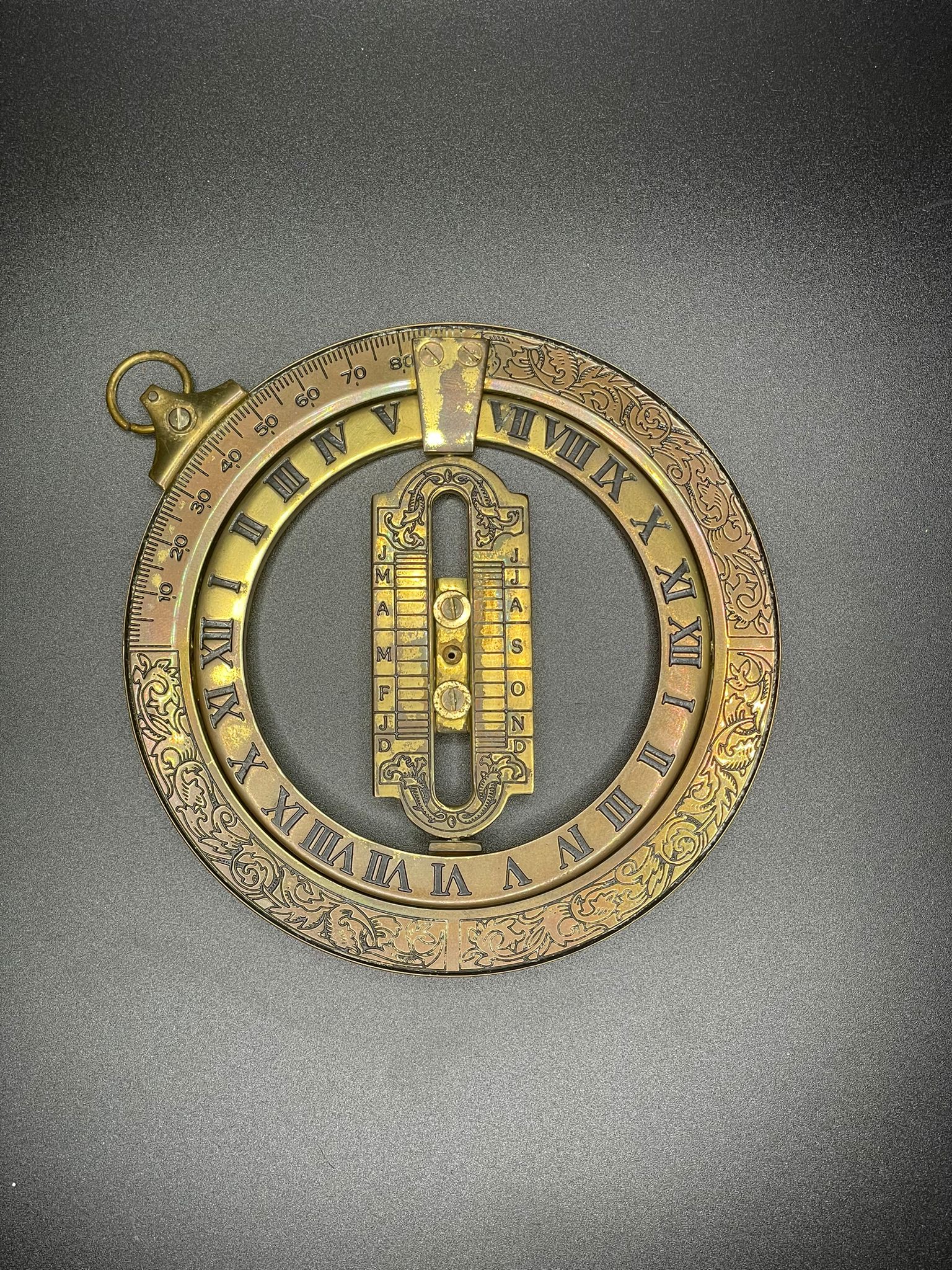Originally developed in the 17th century by English mathematician William Oughtred, the ring dial was a development of an earlier instrument, the astronomer’s ring, which was used for measuring the altitude of stars and also terrestrial objects. The ring dial is essentially a sundial that does not require alignment and the exact direction of north.
Made of brass, the dial consists of two rings and a bridging bar inside the outer ring. The outer ring, known as the meridian ring represents a circle through the North and South celestial poles. The inner hinged ring represents the celestial equator and is engraved with a double twelve hour scale. The rotating bridging bar engraved with a calendar for the day of the month is set at the poles of the meridian to represent the axis of the world and a slider with a pinhole is set between the bars of the bridge to act as the shadow marker.
To use one, the latitude and date needs to be adjusted. After, rotate the inner ring until it won’t turn anymore. Suspend the ring dial by the cord, such that sun shines through the pinhole in the middle and hits the centre of the inner ring to reveal the current time. It can work in any latitude from 20 degrees to 75 degrees, in either hemisphere.


Circa 18th Century. D 4 in
Contact LeeScully to learn more or enquire about the price & shipping
